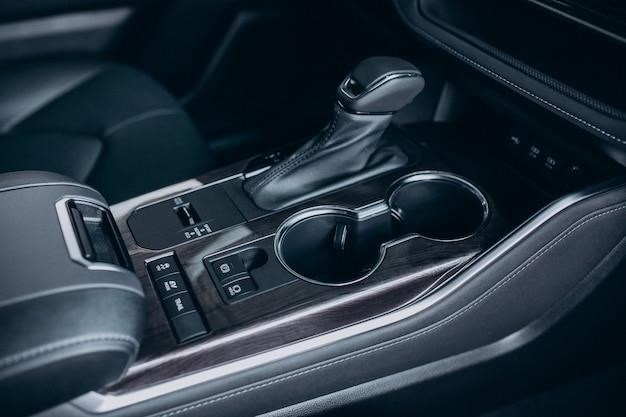wifi repeater user manual
WiFi Repeater User Manual⁚ A Comprehensive Guide
This guide provides comprehensive instructions for setting up, configuring, and using your WiFi repeater. It covers everything from basic installation to advanced features and troubleshooting tips. Learn how to extend your WiFi network, improve signal strength, and enjoy seamless connectivity throughout your home or office.
Introduction
Welcome to the world of WiFi repeaters! These handy devices are designed to extend the range of your existing wireless network, eliminating those frustrating dead zones and ensuring reliable connectivity throughout your home or office. A WiFi repeater, also known as a wireless range extender, acts as a bridge between your router and your devices, boosting the signal and allowing you to enjoy seamless internet access even in areas where your router’s signal is weak.
This user manual will guide you through every step of the process, from setting up your repeater to configuring its advanced features. Whether you’re a tech-savvy user or a complete novice, this comprehensive guide will provide you with the knowledge you need to maximize your WiFi repeater’s potential and enjoy the benefits of a stronger, more reliable wireless network.
Setting Up Your WiFi Repeater
Setting up your WiFi repeater is a straightforward process that typically involves a few simple steps. Most modern repeaters come with a user-friendly interface and clear instructions, making the setup process accessible even for beginners. Start by unpacking your repeater and locating the power adapter and any necessary Ethernet cables. Then, follow these general steps to get your repeater up and running⁚
Locate a suitable position⁚ Choose a location for your repeater that is within range of your router’s signal and in a central location within the area you want to extend. Avoid placing it too close to other electronic devices that might interfere with the signal. Connect the repeater to power⁚ Plug the power adapter into your repeater and an electrical outlet. 3. Connect to your router⁚ Most repeaters offer multiple connection methods, including WPS (Wi-Fi Protected Setup) and a web-based interface. Refer to your repeater’s manual for specific instructions on how to connect it to your router.
2.1. Connecting the Repeater to Your Router
Connecting your WiFi repeater to your router is the first crucial step in extending your wireless network. The process usually involves establishing a secure wireless connection between the repeater and your router. Modern repeaters offer two primary methods for connecting to your router⁚ WPS (Wi-Fi Protected Setup) and web-based configuration.
The WPS method provides a quick and easy way to connect your repeater to your router. Simply press the WPS button on your router and then the WPS button on your repeater. This initiates a secure connection between the devices. However, if your router does not support WPS or you prefer a more manual approach, you can use the web-based configuration method. This involves connecting to the repeater’s network, accessing its web interface, and following the onscreen instructions to connect it to your router.
2.2. Configuring the Repeater
Once your repeater is connected to your router, you need to configure it to optimize its performance and ensure seamless integration with your existing network. The configuration process typically involves setting up the repeater’s SSID (network name) and password, choosing a suitable operating mode (repeater mode or access point mode), and selecting other settings that may be specific to your repeater model.
To access the repeater’s configuration settings, you’ll usually need to connect to its network using a web browser. The exact URL and login credentials are typically provided in the user manual or printed on the repeater’s label. Once you’re logged in, you can adjust various settings, such as choosing a unique SSID for the extended network, setting a strong password, and optimizing the repeater’s performance for your specific environment.
2.3. Positioning Your Repeater
The placement of your WiFi repeater is crucial for optimal performance. Ideally, you want to position it in a location that receives a strong signal from your router, minimizing the distance between the two devices. Additionally, consider the areas where you need extended coverage.
A good rule of thumb is to place the repeater halfway between your router and the areas where you experience weak WiFi signals. Avoid placing it in areas with heavy obstructions, such as thick walls or large appliances, as these can interfere with the signal.
Experiment with different locations to find the spot that provides the best coverage and signal strength for your specific needs. You can use your device’s signal strength indicator or a WiFi analyzer app to help you determine the optimal positioning.
Understanding the WiFi Repeater Interface
The WiFi repeater’s interface is where you’ll manage its settings and configure its operation. Accessing the interface typically involves connecting to the repeater’s network and opening a web browser. Once you’re logged in, you’ll be presented with a dashboard that provides an overview of the repeater’s status and network information.
The interface usually includes sections for configuring network settings, such as wireless security, network names (SSIDs), and passwords. You’ll also find options for adjusting signal strength, controlling access, and managing DHCP server settings. Some repeaters offer additional features like wireless adapter mode or the ability to create a wireless hotspot.
Familiarize yourself with the interface’s layout and navigation to effectively manage your repeater and optimize its performance. The user manual for your specific model will provide detailed information and instructions for navigating the interface and utilizing its various features.
Key Features and Settings
WiFi repeaters offer a range of features and settings that allow you to customize their operation and optimize your network performance. Understanding these features will help you take full advantage of your repeater’s capabilities.
One key feature is the ability to adjust WiFi coverage. You can typically select a desired coverage area for your repeater’s signal, allowing you to fine-tune its reach and ensure strong connectivity throughout your desired space. Another important feature is access control, which lets you limit access to your extended network. This can be useful for restricting access to specific devices or preventing unauthorized users from connecting.
Many repeaters also include DHCP server settings, which enable them to automatically assign IP addresses to connected devices. This simplifies network management and ensures smooth operation for all connected devices. By understanding and utilizing these key features and settings, you can enhance your WiFi experience and ensure reliable connectivity across your network.

4.1. Adjusting WiFi Coverage
Adjusting WiFi coverage is a crucial aspect of optimizing your repeater’s performance. This feature allows you to fine-tune the signal strength and range of your extended network, ensuring optimal connectivity throughout your desired space. By selecting the appropriate coverage area, you can ensure strong signals in areas where your main router’s signal might be weak or nonexistent. This can greatly enhance your WiFi experience, especially in larger homes or offices with multiple rooms or floors.
To adjust WiFi coverage, you typically access the repeater’s settings through a web browser or mobile app. The specific steps may vary depending on your repeater model, but generally involve selecting a coverage mode or adjusting the signal strength levels. By understanding and utilizing this feature, you can effectively extend your WiFi network and enjoy seamless connectivity throughout your home or office.
4.2. Access Control
Access control is a vital security feature that allows you to manage who can connect to your extended WiFi network. By enabling access control, you can restrict access to specific devices or users, enhancing the security of your network and preventing unauthorized connections. This feature is particularly useful if you have sensitive data or want to limit access to children or guests.
Most WiFi repeaters offer two primary access control methods⁚ blacklisting and whitelisting. Blacklisting allows you to block specific devices from connecting to the network, while whitelisting only permits authorized devices to access the network. You can configure access control settings through the repeater’s web interface or mobile app, depending on your model. By using access control, you can create a more secure and controlled WiFi environment, protecting your network from unauthorized access.
4.3. DHCP Server Settings
DHCP (Dynamic Host Configuration Protocol) is a crucial networking protocol that automatically assigns IP addresses to devices on your network. Your WiFi repeater acts as a DHCP server, managing the allocation of IP addresses to devices connected to the extended network. You can access and modify the DHCP server settings through the repeater’s web interface.
The DHCP settings allow you to configure the IP address range for the extended network, set the lease duration for assigned IP addresses, and view a list of connected devices. You can also configure the DHCP server to reserve specific IP addresses for particular devices, ensuring they always receive the same address. By adjusting the DHCP settings, you can ensure efficient IP address management and optimize the performance of your extended network.
Advanced Features
Beyond its primary function of extending your existing WiFi network, your repeater may offer a variety of advanced features that enhance your connectivity and network management capabilities. These features can streamline your setup, provide greater control over your network, and enable you to use your repeater in unique ways.
Depending on your repeater’s model and firmware, you may find features like the ability to use your repeater as a wireless adapter to connect wired devices to your network, or the option to create a wireless hotspot for sharing your internet connection with other devices. These advanced features can unlock new possibilities for network configuration and offer greater flexibility in how you utilize your repeater.
5.1. Using Your Repeater as a Wireless Adapter
Some WiFi repeaters can function as wireless adapters, bridging the gap between your wireless network and devices that only have an Ethernet port. This feature allows you to connect devices like Blu-ray players, gaming consoles, DVRs, or smart TVs to your wireless network without needing to run an Ethernet cable directly to your router.
To use your repeater as a wireless adapter, you’ll typically need to configure it in a specific mode, either through its web interface or using a mobile app. Once configured, you can connect your wired device to the repeater using an Ethernet cable, and the repeater will handle the wireless connection to your router. This feature can be particularly useful for extending your wireless network to areas where running a wired connection is impractical or impossible.
5.2. Creating a Wireless Hotspot
Some WiFi repeaters offer the ability to create a separate wireless hotspot, allowing you to share your internet connection with other devices without directly connecting them to your main network. This can be useful in situations where you want to create a secure or isolated network, for example, for guests or for specific devices.
To create a wireless hotspot using your repeater, you’ll typically need to access its web interface or mobile app and enable the hotspot feature. You can then configure the hotspot’s name (SSID) and password, as well as other settings such as security protocols and encryption. Once the hotspot is set up, devices can connect to it just like any other WiFi network.
Troubleshooting
While WiFi repeaters are generally straightforward to set up and use, you may encounter occasional issues. This section outlines some common problems and their solutions⁚
• Slow or Intermittent Connection⁚ Ensure the repeater is placed within optimal range of both your router and the devices you’re trying to connect. Avoid placing it near walls or other obstructions. Also, consider restarting the router and repeater to refresh their connections.
• Connection Dropping⁚ Check for interference from other wireless networks or devices. Try adjusting the repeater’s channel or frequency to reduce interference. Also, verify that the repeater’s firmware is up to date.
• Inability to Access Repeater’s Settings⁚ Double-check the IP address of the repeater and ensure you are using the correct web address to access its interface. If you’re still unable to connect, try resetting the repeater to its factory settings and configuring it again.
Technical Specifications
The technical specifications of your WiFi repeater will vary depending on the specific model. However, some common specifications include⁚
• Wireless Standards⁚ Typically, WiFi repeaters support the latest IEEE 802.11 standards, such as 802.11ac or 802.11ax (Wi-Fi 6), for faster speeds and greater range.
• Frequency Bands⁚ Most repeaters support both 2.4GHz and 5GHz frequency bands, offering flexibility and compatibility with different devices.
• Data Rate⁚ This specifies the maximum theoretical data transfer rate supported by the repeater, typically measured in Mbps (Megabits per second);
• Antenna Type⁚ Repeaters may have internal or external antennas, with the number and type of antennas impacting signal strength and coverage.
• Ports⁚ Repeaters often include Ethernet ports for wired connections, allowing you to connect devices directly to the repeater.
Warranty and Support
Your WiFi repeater comes with a manufacturer’s warranty that covers defects in materials and workmanship. The warranty period varies depending on the brand and model. Refer to the warranty information included in the product packaging or on the manufacturer’s website for specific details.
If you encounter any issues with your repeater, you can seek support through the manufacturer’s website, online forums, or customer service. Many manufacturers offer online support resources, including FAQs, troubleshooting guides, and user manuals. You can also contact their customer support team via phone, email, or chat for assistance.
It’s recommended to register your repeater with the manufacturer to receive updates, notifications, and potential warranty extensions. Keep your purchase receipt and product serial number handy for future reference.


















